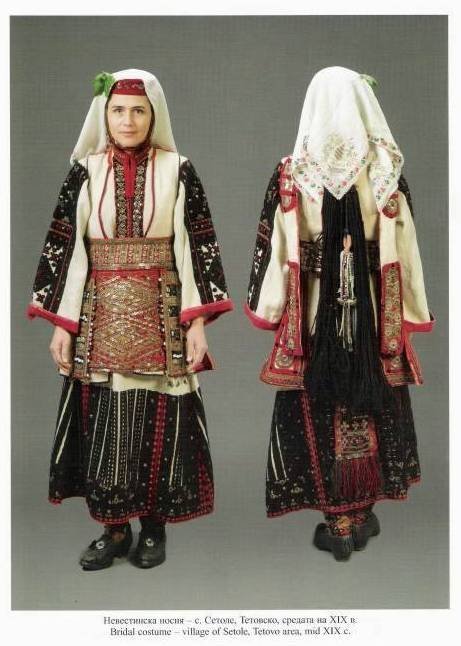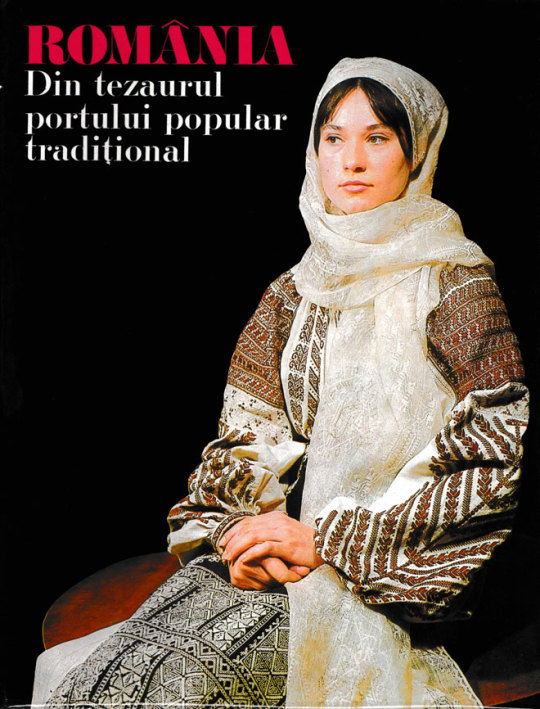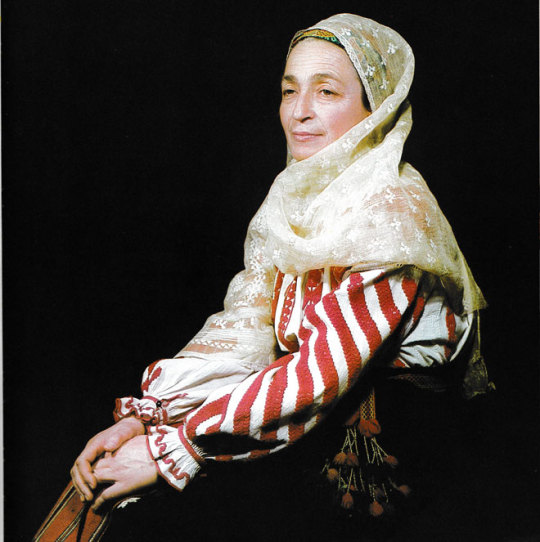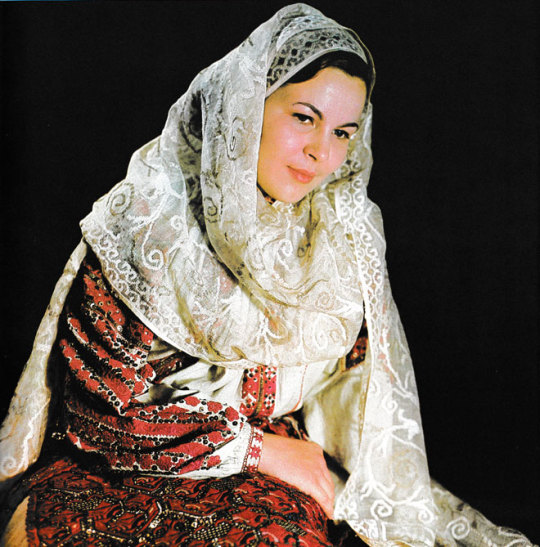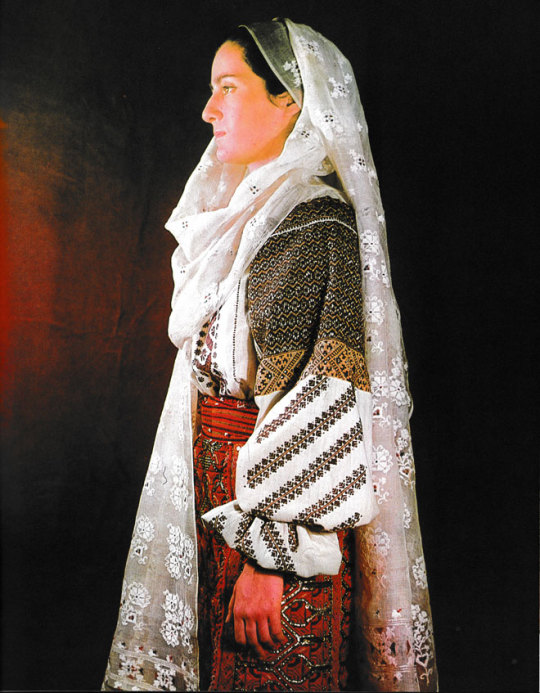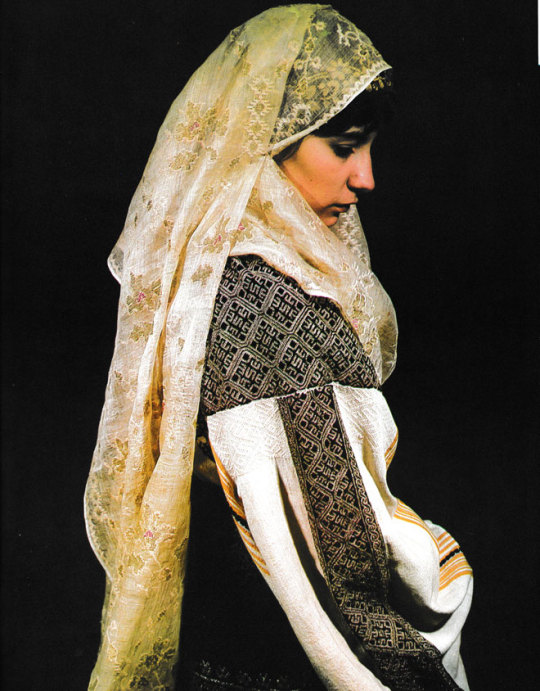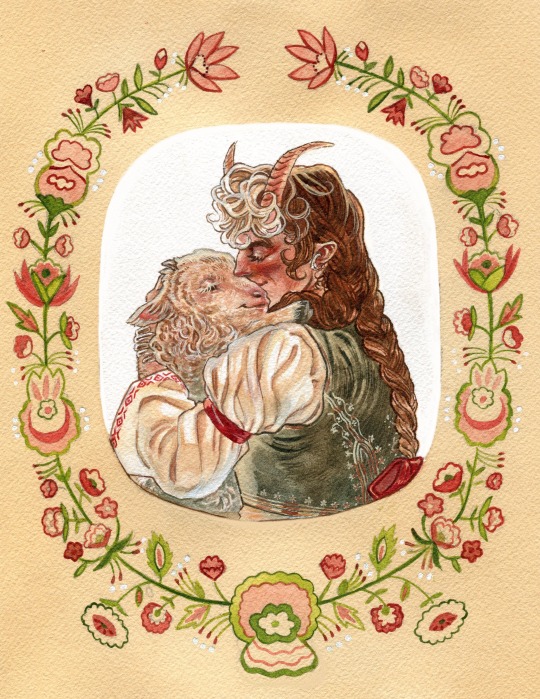Text

Wooden Kozolec (traditional haydrying structure)
Motnik, Slovenia
This toplar-type (linked) hayrack incorporates a raised storage crib between the racks, a loft within the roof volume, and covered space for threshing or storage of farm equipment on the ground below. Crops are delivered to the crib through openings in the floor or front façade. According to Tone Cevc (1993), such linked hayracks were developed to accommodate more complex farming methods in early modern times. The roadside location is convenient for access by farm vehicles.
(photo 1988)
20 notes
·
View notes
Text
What isn't shown here, but can be seen on the gourd in real life (it is displayed in Etnografski muzej Zagreb for the next week or so), is that on the backside, there is a carving of a woman spinning wool with a distaff and a drop spindle, traditionally covert symbols of female sexuality.
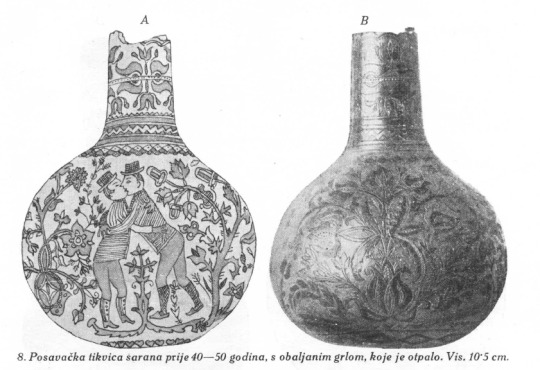
Croatia, Posavina region, carved gourd, made approx 1870.-1880.
110 notes
·
View notes
Text

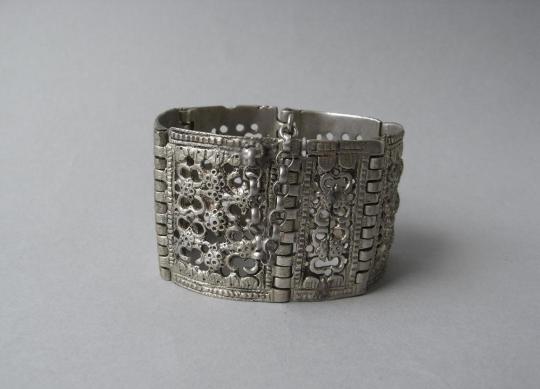
Bracelet, Bulgaria, late XIX/ early XX century
British museum
115 notes
·
View notes
Text
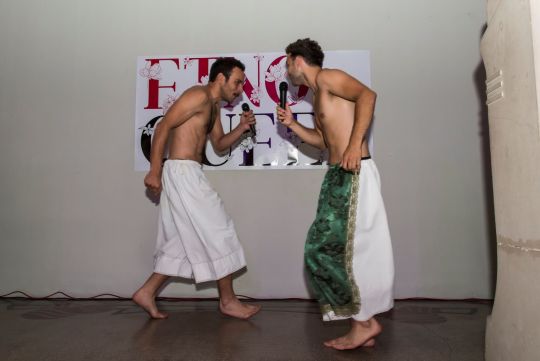
youtube
This is the LADO version of the song, performed during this event. Original by Ignac Mihalec sings more specifically about his imprisonment in Russia after he was sent to the front by Austro-Hungarian during WW1.
hr
šest leti je minulo
ne sem bil v Međimurju
bil sem v stranjskoj zemljici
šest lete v žalosti
bil sem v stranjskoj zemljici
šest lete v žalosti
Božeku se moljila
moja stara majčica
k sebi me dozivala
z mojega Međimurja
živ mi dojdi sinek moj
dojdi svoji dečici
kaj se ne bom plokala
kak za tvega japeka
kak za našeg dedeka
ki spi v stranjskoj zemljici
en
six years have passed
I wasn't in Međimurje
I was in a foreign land
six years in sorrow
I was in a foreign land
six years in sorrow
to God prayed
my old mother
she called me to herself
from my Međimurje
come to me alive my son
come to your children
how could I not cry
like after your father
like after our grandfather
who sleeps in foreign land
today there was an Etno Queer manifestation at the Zagreb Etnographical museum and I'm just 🥺🥺🥺
42 notes
·
View notes
Text
today there was an Etno Queer manifestation at the Zagreb Etnographical museum and I'm just 🥺🥺🥺
42 notes
·
View notes
Photo

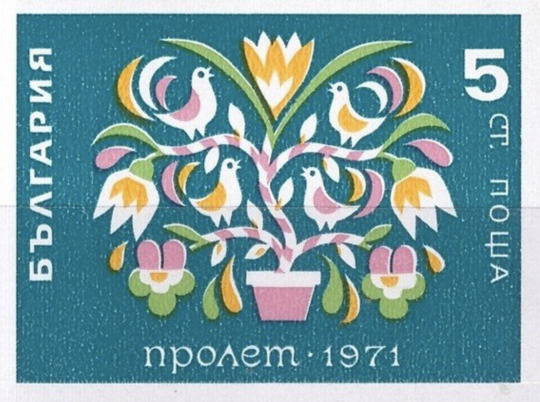
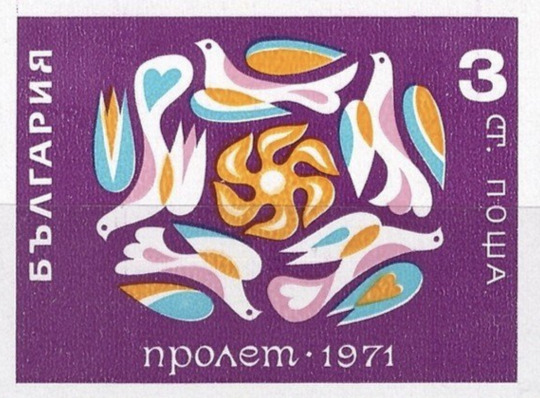

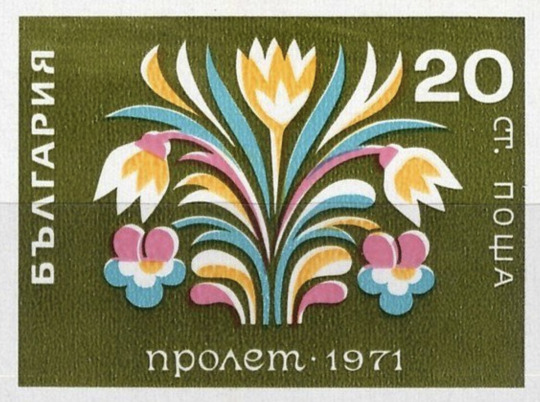
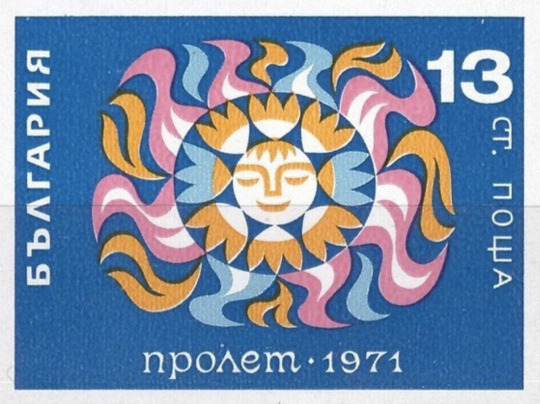
Postage stamps commemorating the arrival of spring, Bulgaria, 1971
4K notes
·
View notes
Note
Prekrasan blog!!😍❤ Ako mogu pitati, od kud inspiracija, bavite li se profesionalno narodnom nošnjom? (Imam i par slika nošnji i ukrasa za glavu s trenutne izložbe u Etnografskom muzeju, ako ste zainteresirani za post.)
Hvala! Ne bavim se profesionalno, ovo je samo hobi. Iskreno, inspiracija mi je što me isfrustriralo koliko je teško naći informacije o nečem što je naše kolektivno nasljeđe na internetu, pa ecce blog haha. Zainteresirana sam, pošaljite pa ću objavit. Ili možete kod sebe pa ću bacit reblog.
0 notes
Text


Kika Jovanović dressed in a Serbian traditional costume from Sarajevsko Polje, Bosnia and Herzegovina. Photographed by Pavel Surovy
282 notes
·
View notes
Text
Dance of peacocks (игра паунова) - is a female traditional dance performed during the ritual of Бела вила in Velika Hoča, Serbia, on the third day after Easter.
Women in folk costumes dance in a circle (kolo, oro) and sing the old traditional song "Паун пасе, трава расте":
Паун мој, паун мој
Паун 'оће да се жени, паун мој.
Паун 'оће лепу жену, паун мој.
Паун пасе, трава расте, паун мој.
Паун нага, глава боли.
Паун нага, крило боли.
Паун нага, нога боли.
Паун, мој, паун мој.

that ends with "левка" through which all participants pass to the altar in the church of St. John, where they present modest gifts to the church. They sing:
Вишњичица род родила, маљен мој, маљен мој.
Немај вишњу кој да бере, маљен мој, маљен мој.
Само момче и девојче, маљен мој, маљен мој.
Women decorate their headscarfs with flowers to resemble the male and female peacock. Male peacock goes around and kisses the prettiest young girls, it is belived that the first girl who's kissed will get married soon (that she will be already engaged until next Easter).
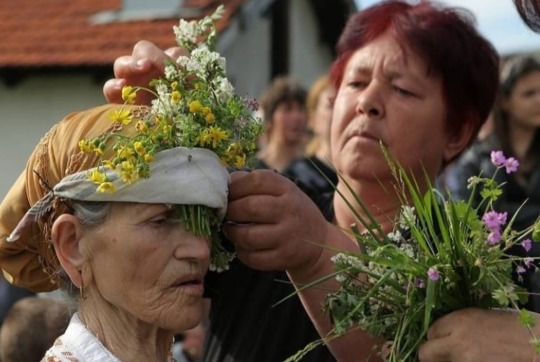
Female peacock should be the oldest woman in the village, she goes around and tries to stop the male peacock from kissing young girls by jokingly and gently pulling him. Peacocks in this dance symbolise young man and woman.
181 notes
·
View notes
Text

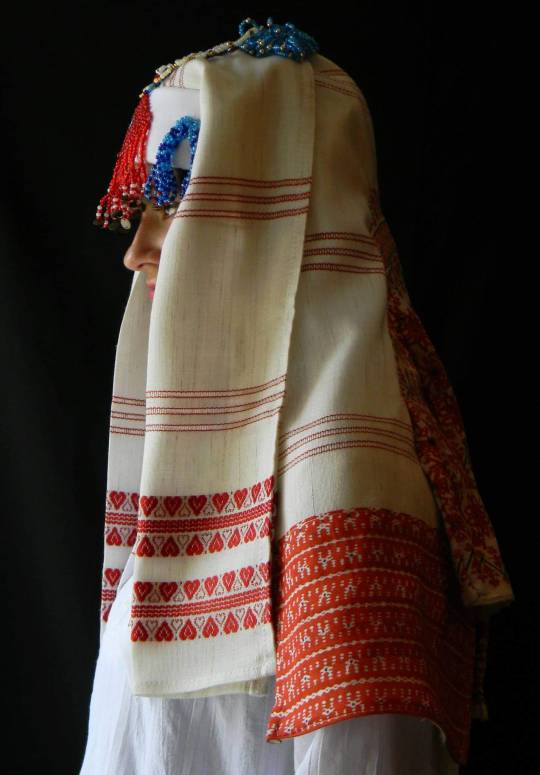

Reconstruction of the Serbian traditional festive headdress "prevez" from Peć, Metohija, southern Serbia, 19th century. Đorđe Baščarević
The prevez consists of three ručniks and two handkerchiefs embroidered and decorated with pearls and gold threads. The ručniks are not the same shape, and are placed so as to cover the hair and upper back, and are interconnected by decorative head pins, which have tassels of multicolored beads. Decorations of pearls and small coins go from the forehead over the eyes. This decoration protects the bride (when she puts on this headdress for the first time) from evil eyes, because our people believe that yes are a mirror of the soul and that someone can harm us through them. The hair is braided into trvelje.
172 notes
·
View notes
Text




Romanian blouse from Ciolăneștii de Sus, Teleorman and its details
429 notes
·
View notes
Text
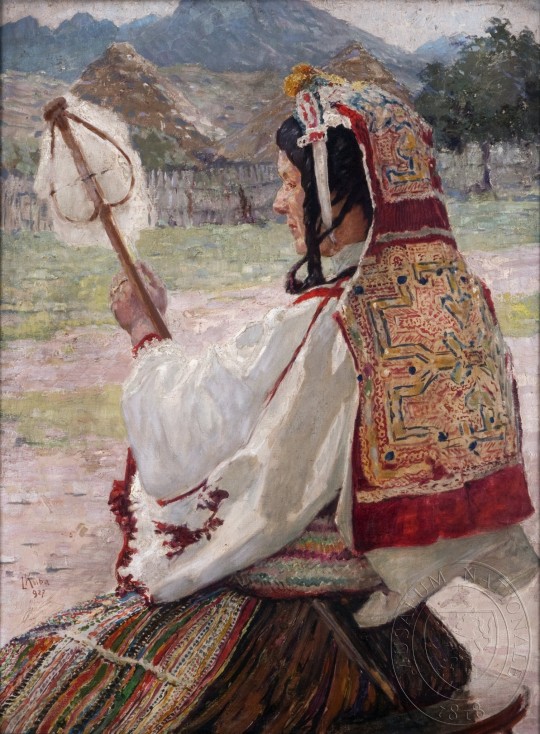
žena s přeslicí, ludvík kuba - serbian woman from planjane, sredska.
267 notes
·
View notes
Text

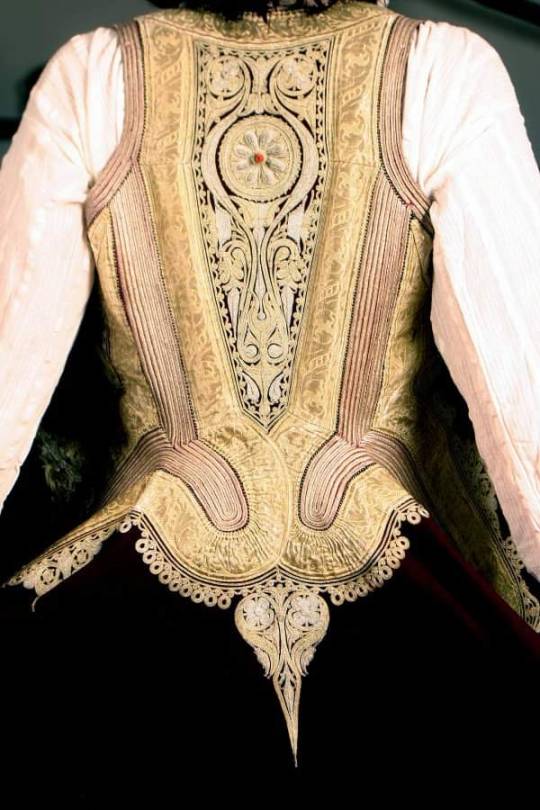
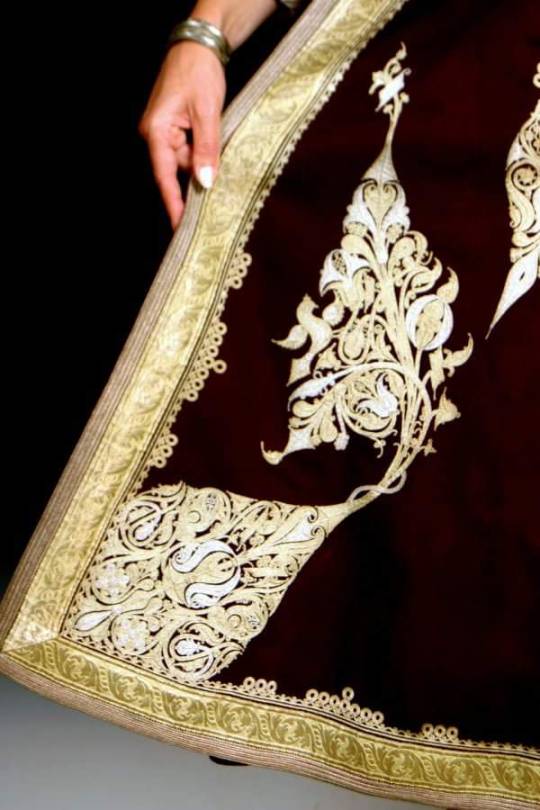
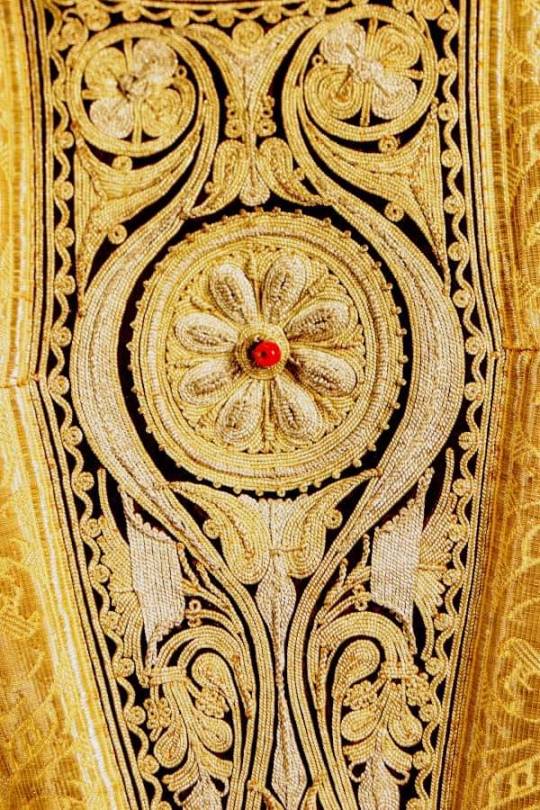
Costume of the town and village on the interval of two centuries, Prizren and its surroundings, 1880-1918. cred. Ethnographic Museum Belgrade, Serbia, 1994.
503 notes
·
View notes
